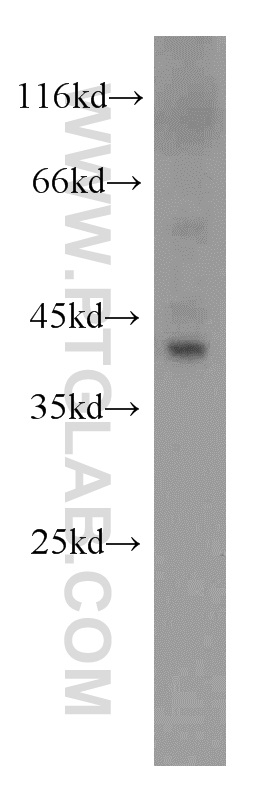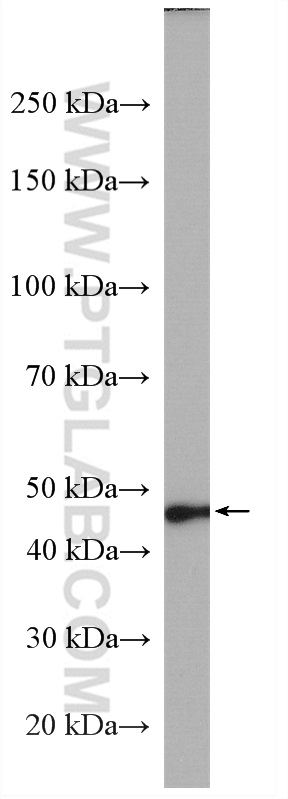验证数据展示
经过测试的应用
| Positive WB detected in | mouse liver tissue, mouse lung tissue |
推荐稀释比
| 应用 | 推荐稀释比 |
|---|---|
| Western Blot (WB) | WB : 1:500-1:2000 |
| It is recommended that this reagent should be titrated in each testing system to obtain optimal results. | |
| Sample-dependent, Check data in validation data gallery. | |
发表文章中的应用
| IF | See 1 publications below |
产品信息
22394-1-AP targets AGXT in WB, IF, ELISA applications and shows reactivity with human, mouse samples.
| 经测试应用 | WB, ELISA Application Description |
| 文献引用应用 | IF |
| 经测试反应性 | human, mouse |
| 文献引用反应性 | mouse |
| 免疫原 | AGXT fusion protein Ag18062 种属同源性预测 |
| 宿主/亚型 | Rabbit / IgG |
| 抗体类别 | Polyclonal |
| 产品类型 | Antibody |
| 全称 | alanine-glyoxylate aminotransferase |
| 别名 | EC:2.6.1.51, EC:2.6.1.44, Alanine--glyoxylate aminotransferase, AGXT1, AGT1 |
| 计算分子量 | 392 aa, 43 kDa |
| 观测分子量 | 43-45 kDa |
| GenBank蛋白编号 | BC132819 |
| 基因名称 | AGXT |
| Gene ID (NCBI) | 189 |
| RRID | AB_2879098 |
| 偶联类型 | Unconjugated |
| 形式 | Liquid |
| 纯化方式 | Antigen affinity purification |
| UNIPROT ID | P21549 |
| 储存缓冲液 | PBS with 0.02% sodium azide and 50% glycerol , pH 7.3 |
| 储存条件 | Store at -20°C. Stable for one year after shipment. Aliquoting is unnecessary for -20oC storage. |
背景介绍
AGXT (AGT) is a key enzyme in glyoxylate detoxification. Mutations of AGXT lead to primary hyperoxaluria type I, a rare metabolic disease that is characterized by deficient AGXT, and excessive hepatic oxalate production that leads to renal failure.
实验方案
| Product Specific Protocols | |
|---|---|
| WB protocol for AGXT antibody 22394-1-AP | Download protocol |
| Standard Protocols | |
|---|---|
| Click here to view our Standard Protocols |

